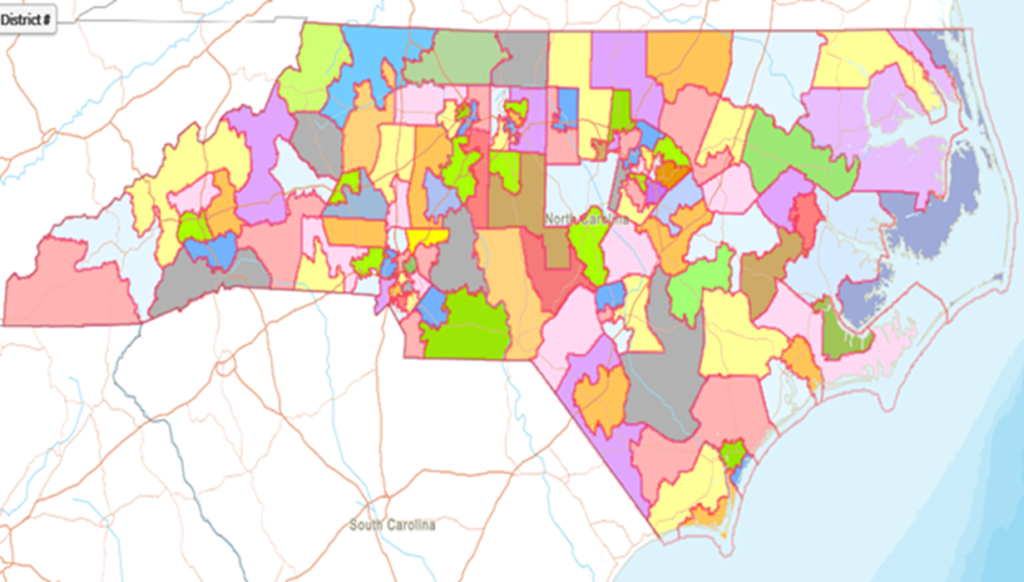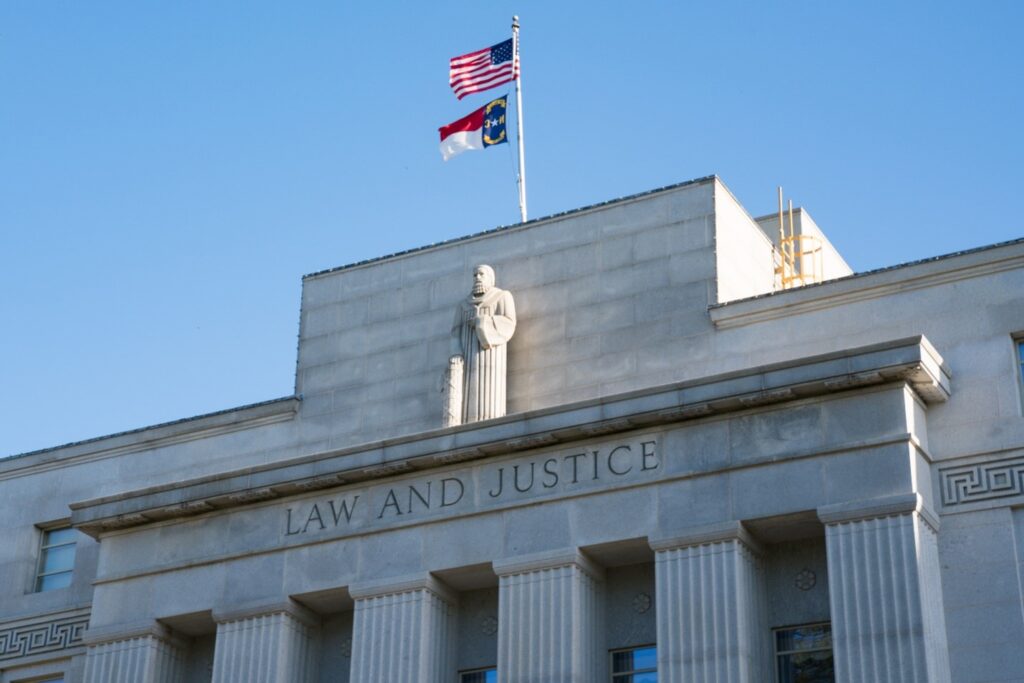
By L.A. Williams
Christian Action League
February 24, 2022
Two out of three voting maps drawn by state lawmakers won approval from a three-judge Superior Court panel Wednesday, but the trio rejected the Legislature’s Congressional map, instead imposing a version created by an unelected “Special Masters” committee. The ruling drew equal ire from N.C. House Speaker Tim Moore (R-Cleveland) and Democratic Gov. Roy Cooper, but for different reasons.
“Today’s ruling is nothing short of egregious,” Moore said. “The trial court’s decision to impose a map drawn by anyone other than the Legislature is simply unconstitutional and an affront to every North Carolina voter whose representation would be determined by unelected, partisan activists.”
Republican lawmakers immediately appealed the ruling on the congressional map, as Moore lamented that the court had “taken a hammer to our state constitution and the rule of law.”
Cooper, on the other hand, was most perturbed that the court accepted the Senate redistricting map, which he said “may have been the worst of the bunch.”
“Our elections should not go forward until we have fair, constitutional maps,” the governor said.
Senate leader Phil Berger (R-Rockingham) released this statement about the ruling: “The General Assembly’s remedial legislative maps met all of the court-mandated tests and were constitutionally compliant. A bipartisan panel of Special Masters affirmed that. We’re thankful for the trial court’s ruling today. We disagree with the interim Congressional map imposed by the Special Masters and are seeking a stay of that map, however, it’s time to move on and allow the filing period to begin.”
The ruling was the latest in a long saga regarding North Carolina voting districts and how they should be drawn. The maps Republican lawmakers drew late last year were deemed unconstitutional by the state Supreme Court, who sent legislators back to the drawing board.
The judicial panel that ruled against the congressional map on Wednesday had earlier approved the General Assembly’s efforts, saying in effect that the maps leaned in favor of Republicans but that such gerrymandering was within the law. That ruling was overturned by the state Supreme Court, which sent the case back to the panel, putting them in an extreme time crunch with the election filing period looming.
The General Assembly and their opponents in the lawsuit had to provide their versions of political maps on Friday, Feb. 18 and their arguments for why their maps should be chosen by Monday, Feb. 21. That left Superior Court Judges Graham Shirley II, Nathaniel Poovey, and Dawn Layton, less than a day and a half to pore over eight maps and all the arguments for and against them and make their ruling.
“The General Assembly has failed to demonstrate that their proposed Congressional map is narrowly tailored to a compelling governmental interest, and we therefore must conclude that the Remedial Congressional Map is unconstitutional,” the judges wrote in issuing their order on Wednesday. What surprised the plaintiffs — the North Carolina League of Conservation Voters and Common Cause — as well as the lawmakers named as defendants, is that rather than choose substitutions proposed by the plaintiffs, the court adopted a congressional map drawn by the “Special Masters,” three former jurists of North Carolina appellate and trial courts — Robert F. Orr, Robert H. Edmunds, Jr., and Thomas W. Ross — and four university professors from across the nation that the three had hired to help them analyze the remedial plans.
“Given that the ultimate authority and directive is given to the Legislature to draw redistricting maps, we conclude that the appropriate remedy is to modify the Legislative Remedial Congressional Plan to bring it into compliance with the Supreme Court’s order,” the three-judge panel wrote. “The Interim Congressional Plan as proposed by the Special Masters satisfies the Supreme Court’s standards and should be adopted by this Court for the 2022 North Carolina Congressional elections.”
Because the judicial order addresses only the 2022 elections, lawmakers presumably get another go at producing a congressional map for the rest of the decade.

“I have said this many times before because it is one of the gravest issues of our times. I am not an attorney, but I do know how to define a constitution,” said Rev. Mark Creech, executive director of the Christian Action League.
“Supreme Court Justice William Patterson in 1795 said it this way:
“‘It is the form of government delineated by the mighty hand of the people, in which certain first principles of fundamental law are established. The Constitution is certain and fixed; it contains the permanent will of the people, and is the supreme law of the land; it is paramount to the power of the legislature, and can be revoked or altered only by the authority that made it.’
“Our problem today is that Judges are now giving us their own interpretation of the Constitution. In other words, the Constitution is whatever they say it is. At the current time, no action within our government undermines our Republic more – no other action by our government undermines more, ‘We the People.’ The maps drawn by the legislature should have never come before the High Court. Strange how during the time when Democrats controlled the legislature for 140 years in this state, the maps never came before the courts. And don’t think that those maps weren’t gerrymandered. What Balderdash!”
The filing period for May primaries began Thursday, based on the new maps, as county election officials tapped into a new internet-based district-locator tool provided by the state Board of Elections to help them ensure that potential candidates were filing in the correct district. The filing period ends at noon on March 4.
